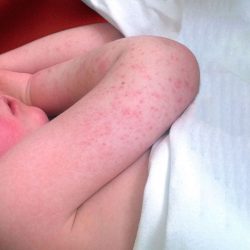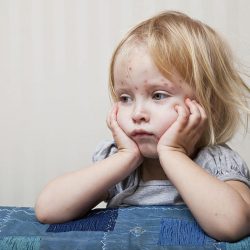Whooping cough, also known as pertussis, is an acute bacterial infection of the respiratory tract caused by Bordetella pertussis. This disease is particularly dangerous for infants and young children. All age groups can be affected. Pertussis initially manifests itself with symptoms similar to those of the common cold. However, they rapidly progress to violent, characteristic coughing fits, followed by noisy, wheezing inspiration. Vaccination is the most effective means of prevention, but sporadic epidemics continue to occur as vaccine immunity declines over time.
What is the infectious agent responsible for pertussis?
Pertussis is a highly contagious bacterial infection of the lower respiratory tract, with little or no fever . It is caused mainly by Bordetella pertussis and sometimes by Bordetella parapertussis. It is transmitted by air, often within the family or in groups, through contact with a sick person who is coughing. Droplets of saliva expelled when coughing or sneezing spread the bacteria. Once inhaled, Bordetella pertussis multiplies on the ciliated epithelium of the bronchi and trachea. This bacterium then releases specific toxins that cause the characteristic symptoms.
In adults, one in three undiagnosed chronic coughs is often due to pertussis. Bordetella pertussis, a gram-negative coccobacillus, was first described by Jules Bordet in 1900. It attaches itself to tracheal ciliated cells and synthesises toxins responsible for symptoms such as destruction of the ciliated cells and accumulation of mucus, leading to prolonged coughing without fever.
Pre-school and school-age children are the main sources of infection, but adults and the elderly can also be healthy carriers. Risk factors include close proximity to an infected person, especially in confined spaces. Contagiousness is highest in the catarrhal phase (first stage) and decreases after five days of effective antibiotic treatment. Without treatment, the contagious phase can last up to three weeks.
Pertussis is particularly dangerous for infants, the elderly and pregnant women. In regions where children are vaccinated, adolescents and adults can transmit the disease to infants who have not yet been immunised. Pertussis can be transmitted from mother to newborn after birth by the respiratory route.
What are the symptoms?
Typical pertussis occurs in three distinct phases:
- Incubation phase: Without symptoms, this phase lasts from seven to twenty-one days, with an average of ten days.
- Paroxysmal phase: Characterised by a persistent cough without fever, lasting more than seven days. The cough manifests itself in sudden, violent fits, often followed by vomiting and breathing difficulties. In infants, apnoea and bradycardia may occur, sometimes accompanied by cyanosis. In adolescents and adults, attacks are more frequent at night.
- Convalescence phase: This phase may last several weeks. Young children may develop pneumonia or neurological conditions such as convulsions and encephalitis. In infants, pertussis can be fatal, causing respiratory or multiple organ failure.
If left untreated, coughing spells can last up to six weeks. Contagiousness is highest in the first week of coughing. It diminishes after three weeks without treatment or five days after effective antibiotic therapy.
Complications are serious in infants (convulsions, heart problems, respiratory distress) and rare in adults (ear infections, pneumonia). Pregnant women may experience uterine contractions due to coughing fits. Pertussis is highly contagious, requiring particular attention to prevention and treatment.
The diagnosis of whooping cough is based on several criteria. Clinically, a persistent cough lasting more than seven days that worsens and becomes paroxysmal is suspicious. Biologically, a nasopharyngeal swab followed by a culture or PCR is taken, particularly if the cough has lasted for less than three weeks. Epidemiologically, the presence of a primary case in the family or friends reinforces the suspicion of pertussis. PCR remains the most sensitive test, and should be carried out as soon as the first symptoms appear for an accurate diagnosis.
What is the situation in France?
Following a call for vigilance in April 2024 concerning the resurgence of pertussis in Europe and France in the first quarter of 2024, Santé publique France is reporting an epidemic situation with very significant circulation of the bacterium in the first few months of the year.
In the first quarter of 2024, several cluster cases were reported in communities in France, with a higher number of clusters than in the whole of 2023. In the space of a few weeks, seven regions (Île-de-France, Bretagne, Pays de Loire, Auvergne Rhône-Alpes, Grand-Est, Occitanie and Nouvelle-Aquitaine) reported more than twenty clusters, mainly in schools and nursery schools.
At the beginning of June 2024, pertussis surveillance indicators showed a resurgence of the disease, with significant increases. Santé publique France recorded almost 7,000 positive PCRs over the first five months of 2024 (compared with 518 for the whole of 2023). The RENACOQ hospital network reported 46 cases in infants aged under 12 months (compared with 41 in 2023). Data from the OSCOUR and SOS Médecins networks show a marked increase in emergency room visits and hospitalisations for pertussis, up sevenfold between week 11 and week 22.
In Europe, there has also been a significant increase in the number of cases, with 32,037 cases reported by the ECDC between 1 January and 31 March 2024, compared with 25,130 in 2023. Pertussis evolves in cycles of recrudescence every three to five years. The last cycle in France dates from 2017-2018. The start of this new cycle means that the general public and healthcare professionals need to be made more aware of the disease, especially before major summer gatherings and the Olympic and Paralympic Games.





